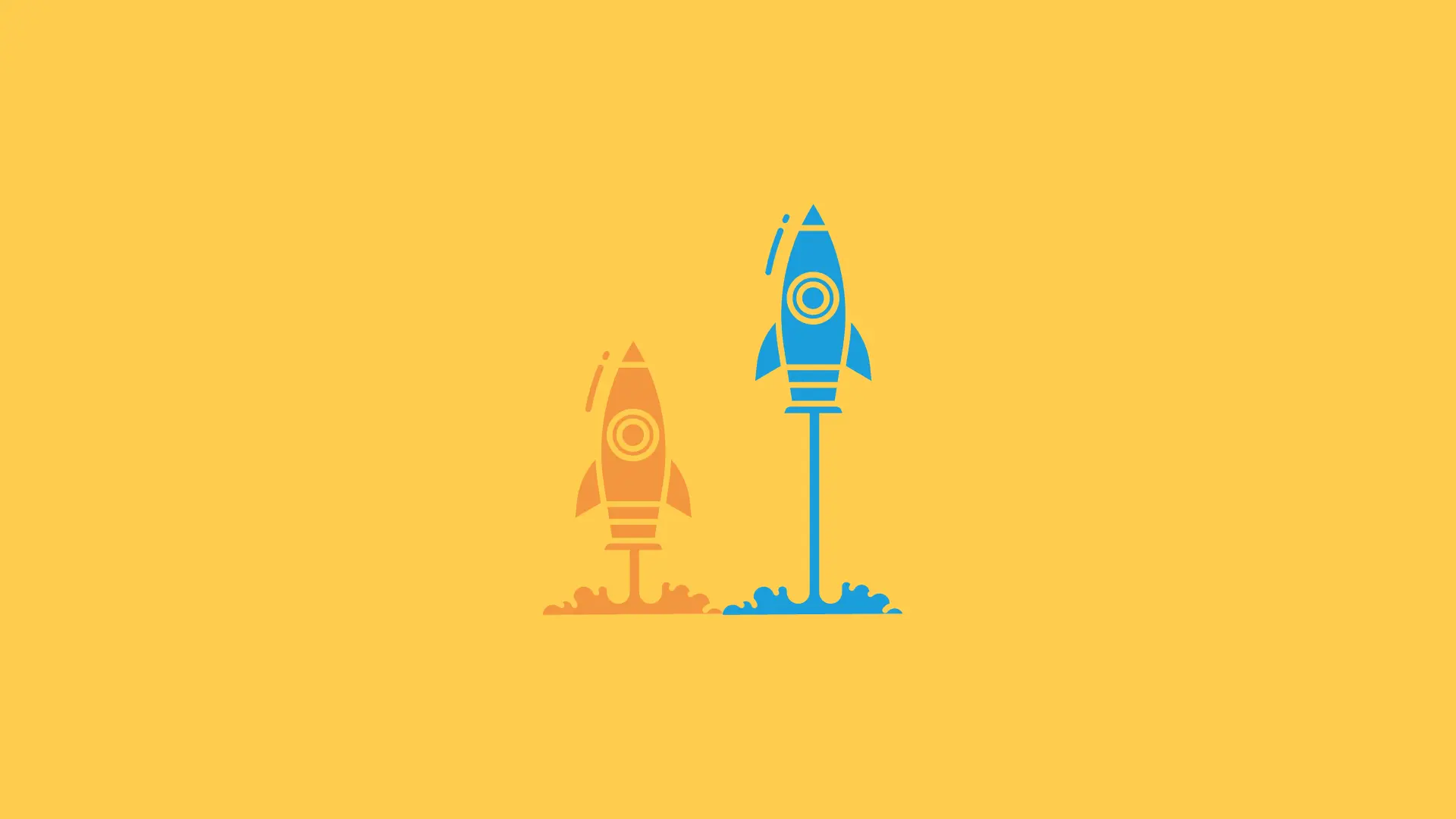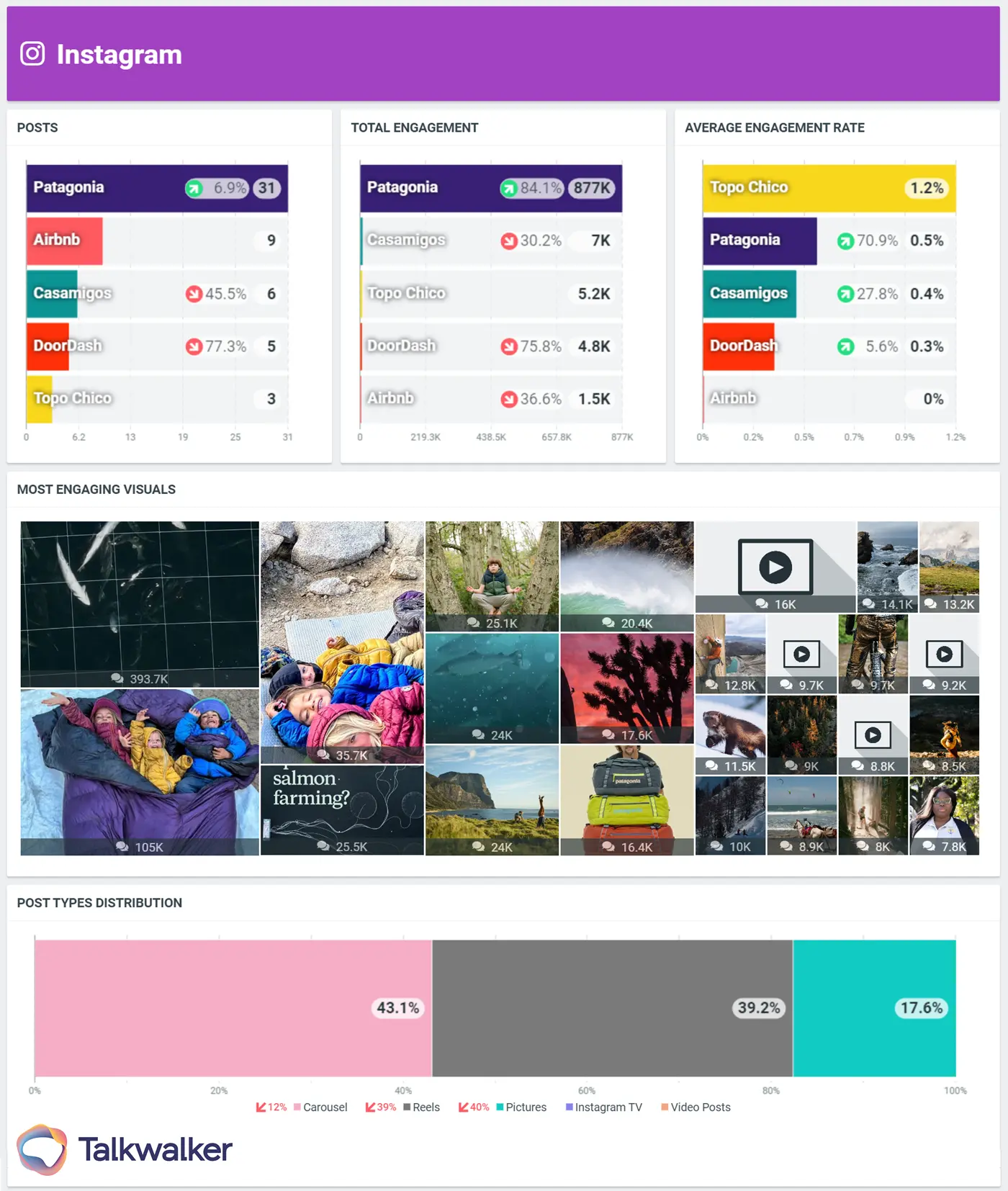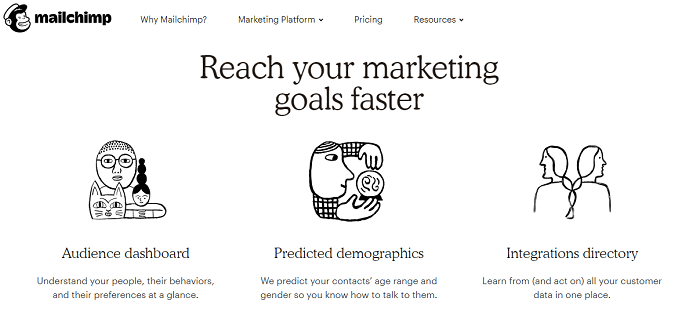What is performance benchmarking?
Benchmarking measures the performance of your company - products, services, processes - against best in class organizations and industry ...
February 23, 2024

Performance benchmarking is a powerful tool, if you’re looking for continuous improvements in your business processes. But, you’ll be wasting your time if you only benchmark against yourself.
Competitive benchmarking dashboard
What is performance benchmarking?
First up, you need to determine the processes in your company that keep it running smoothly. And I mean all of them. From your internal messaging tool to your product’s time to market. Then, pit them against other companies and industry standards.
To start benchmarking your social performance against your competitors, try our free Social Search by clicking below.
Try Free Social SearchLet’s start digging. First up… what is performance benchmarking?
Benchmarking definition
Brand benchmarking is a process of measuring the performance of a company’s products, services, operations, and processes against other companies - recognized as best-in-class - or the wider marketplace.
The most common metrics for benchmarking include cost per unit, time to produce, product/service quality, effectiveness, time to market, customer satisfaction & loyalty, and brand recognition.
Benchmarking against leading companies will gather insights to help you understand how your brand compares, even if they’re in a different industry, or have a different audience.
Benchmarking is a process for obtaining a measure - a benchmark. Benchmarks are the “what”, and benchmarking is the “how.”
Why is benchmarking important?
Implementing a benchmarking process will help your business get stronger. Processes will be more efficient. Quality improved. You’ll save money while increasing revenue. Studying best-in-class companies, and identifying why their processes work so well, enable continuous improvement within your business.
That could mean updating a product feature to meet or beat a competitor’s product. Implementing a social media management tool for scheduling your social messaging. Introducing training days for your team.
Benchmarking will help your business…
Improve your processes, operations, procedures
Measure how effective your past performance is
Identify how your competitors operate
Improve efficiency and reduce operating costs
Improve product/service quality
Increase customer satisfaction and loyalty
Monitor performance
Look at current benchmark metrics to identify industry standards you should strive to meet or surpass. Benchmarking is an ongoing process, with performance monitoring playing a crucial part.
Competitive analysis
By comparing your performance with that of your competitors - what they’re doing right and what they’re doing wrong - you’ll identify areas in your business that can be improved. Gaining the competitive edge.
Goals
You should have already determined your business goals, but benchmarking goals are different. They’re about improved performance of your company processes. They’re competitive. But, as with your business goals, they must be achievable.
Don’t forget, they must be SMART - Specific, Measurable, Achievable, Relevant, Timely.
SMART goals for performance benchmarking
SMART goals - Specific, Measurable, Achievable, Relevant, Timely.
Specific - real numbers, real deadlines - who, what, where, why?
Achievable - are your goals challenging, yet possible?
Measurable - how will you track and analyze your progress?
Relevant - do you have the resources to achieve your goal?
Timely - when do you intend to reach your goal?
Make your goals unrealistic, and you’re going to fail.
Benchmarking basics
Benchmarking is a way to measure the performance of your company’s products, services, processes, and operations. The data collected should then be compared to an industry-standard - a benchmark.
Benchmarks are the what. Benchmarking is the how.
For instance, it takes one hour to produce your product, one engineer, and sells at a cost of $25.
Is that good or bad?
You can only answer this question accurately if you have data from other companies producing the same product as you. If brand X produces its product in 30 minutes, one engineer, and also sells for $25, this benchmark indicates that you need to look at ways to speed up your production line.
It’s all about improving how your company works. Making it run smoothly and efficiently. Ensuring you’re not wasting money. Grabbing a bigger portion of your market.
Identify where other brands are performing better than you, and how
Compare your competitors’ processes with yours
Analyze the data collected and implement changes to improve your processes, products, operations
Benchmarking classifications
There are several forms of benchmarking. I’ll concentrate on the primary ones.
Internal benchmarking
Can an internal process be more efficient?
Collect data on your performance at different times - days, weeks, months, etc. Or during different situations, like a PR crisis, product launch, or event. This will find the weakest areas. Processes that can be improved, such as converting leads to customers, onboarding new team members, etc.
The advantages of internal benchmarking are that you have access to all the data you need, and it’s quicker.
The disadvantage?
If you don’t go outside your business/industry, and learn from top performers, you’re limiting your success.
Competitive benchmarking
How do your competitors’ processes and operations function?
Unlike competitor analysis, where a brand tries to gain a competitive edge by jumping into missed areas - new features, countries to target, etc., competitive benchmarking is different. It involves gathering insights to show how their processes work, compared to yours. And, will identify industry performance standards.
Compare products, services, processes, and methods. You’ll identify your position in your industry, and how to increase productivity and success.
For example… what’s customer sentiment - positive, negative, neutral - towards your competitor’s brand? What are customers saying in comments, reviews, or social posts? Collect this data and, if it’s better than your internal results, work out how to improve those areas in your business.
Strategic benchmarking
Strategic benchmarking compares your performance with best-in-class performers. Your data collection shouldn’t be limited to your own industry. You’ll look at brands that have proved successful in a particular process.
This type of benchmarking helps the overall performance of your business. It looks at your long-term strategies, compared to other brands. Suggested improvements that result from strategic benchmarking are not quick fixes. You’ll be considering your core competencies, new product development, etc.
Performance benchmarking process
The benchmarking process doesn’t have to be difficult. We'll share the key steps involved, which work across all industries.
Successful benchmarking is quantitative and qualitative. You’ll compare your business with competitors, and organizations outside your industry. It’s a process that requires the support of your entire company.
It’s not a quick fix. And it’s not magic. Updating your CRM software won’t turn you into IBM. But, it will motivate change in your company. You’ll collect insights that if managed, will bring improvements.
Here’s the process to follow...
The plan
You’ll need to get top management onboard and prepared to allot time, manpower, and money. You’ll also need their involvement to support any major changes that result from your benchmarking, such as new product development, training, or purchasing new tools.
Choose processes that are integral to your company’s success. Those that give you the competitive edge. They need to be measurable, so you can determine the metrics to be compared.
Perform a SWOT analysis to determine your company’s strengths, weaknesses, opportunities, and threats, compared with your competitors.

SWOT analysis - Strengths, Weaknesses, Opportunities, Threats.
Don’t forget the knock-on effect. If you change one process, how will it affect other processes? Fixing one and breaking another, is not the way to go.
Now, choose a benchmark to compare with. It could be from an organization such as a competitor, or an organization in a different industry, country, region, etc. But, ensure it’s a top performer in the process you're evaluating/improving.
The collection of data
You'll collect data from several sources. From the company you wish to benchmark against, and data that’s publicly available - websites, press releases, publications. When researching, consider market research, surveys, questionnaires, onsite/telephone interviews, etc.
Using social media analytics, you can gather information from online conversations, blogs, forums, and review sites. This information will reveal sentiment towards a brand, and consumer feedback on products, services, or processes.
Benchmarking example - customer service
Wanting to improve customer service, a brand should compare its processes with its top competitors. The successful ones. Identify what they’re doing that’s working.
If online or brick-and-mortar business, identify how they talk to customers. What language are they using? Do they use ‘how to’ videos to help customers?
Many offline industries - restaurants, bars, etc. - will use mystery customers as part of their benchmarking process. For example, a person goes to a bar and orders a drink or food. They'll check the standard of cleanliness, customer service, and upselling offers.
The analysis
With all relevant data collected, it’s time to analyze.
Data visualization tools are going to help your process. It’s easier for people to understand images than pages of numbers.
Quick Search compare competitors
Quick Search - Showing share of countries for BMW & Audi.So much easier to understand than an Excel spreadsheet!
Identify the gaps in your processes - compared to the organization you're benchmarking against - where your performance is letting you down. What’s caused this gap - manpower, time, wrong tools, etc.?
How is Brand X getting their product to market quicker than you? How does Brand X manufacture their product cheaper than you?
Time to implement
You’re going to need a plan of action.
You’ve found the gaps, and know how to fill them. It'll potentially mean big changes, and you’ll need your bosses and your team onside. Ensure you have the resources you need to implement the improvements.
Once everything is in place, you’re on your way to a winning benchmarking process.
Ongoing evaluation
It doesn’t stop. Ever.
For your benchmarking to be successful, you have to monitor regularly. What progress has been made? How have the changes impacted your business processes? Do you need to make changes to improve further?
Let's look at how marketers will benefit if they follow a digital benchmarking process…
Benchmarking marketing
Benchmarking your marketing strategies enables you to evaluate whether they’re as good as they can be. You’ll need to start by reviewing your existing activities. Track the frequency of campaigns. Monitor engagement rates. Are they bringing results - conversions, new customers, open-rates, etc?
Having collected all your data, you can make improvements and increase ROI.
First up, collecting the data. Follow these five steps, to benchmark your brand’s marketing efforts…
1. Determine the marketing processes you want to measure
You'll need pre-established marketing goals to choose what you want to benchmark - whether social media channels, website pages, emails, blog posts, paid ads, etc. Goals that could include...
Increasing email open-rate
Boosting engagement on your social posts
Increasing the number of visitors to your site
Your marketing benchmarking could focus on…
Measuring the open-rate of your promotional emails
Tracking the engagement rate your tweets are earning
How long visitors are spending on your website
2. Choose your metrics
Don’t go crazy. Too much data, and you’ll be overwhelmed.
Benchmarking has to be precise, so you can implement the best actions. For instance, benchmarking your blog…
What’s the frequency of your blog posts?
Where are your blog visitors coming from?
How long do visitors spend reading your content?
What do visitors do after they’ve read your content - click CTA, click to another page, bounce, etc.?
For your social media channels, benchmarking performance metrics could be…
How often do you tweet/share?
What’s the engagement rate of your social posts?
How many people click your CTA?
How many retweet/share your messages?
3. Competitor analysis
Competitor analysis is vital, regardless of your industry. What are they doing that’s working? Are you doing it too? What countries are they successful in? Are you? You have to learn from their strengths and exploit their weaknesses.
How often do they publish blog posts?
What’s their social media posting schedule?
Which countries are they targeting?
What are consumers saying about their products?
Check out our Competitor Analysis Guide. Not a sneaky peek at your competitors’ social channels. That’s just being nosey. The best competitor analysis will identify opportunities that’ll help you improve your marketing campaigns - targeting, SEO, content, leads, conversions, revenue, and more.

Determine which channels are working best for industry leaders
Remember, you must be brutally honest about your brand, and compare it with the data you collect about your competitors.
4. Build your digital marketing strategy
You’ve established your digital marketing benchmark. Now you need to define your strategic objectives. Choose SMART goals. For example...
Blog - increase subscribers to your blog by 55% by Q3
Social - increase LinkedIn followers to 750K by Q4
Email - achieve an average email click-through rate of 20% by December
Paid - increase website traffic 4,000 visitors per month by November
5. Regular analysis
Benchmarking your marketing activities is not a one-time process. It should be performed regularly, so you can understand how your processes are improving and the impact your strategies are having.
You're going to an analytics plan. Check out our Social Media Analytics Guide. It explains all you need to measure, how to do it, competitive intelligence, and the tools you'll need.
Marketing benchmarks
Marketing benchmarks allow you to compare your results with your competitors and industry. You’ll find your competitive advantage. You’ll identify where you’re underachieving.
To benchmark your marketing activities, you’ll need data about your competitors. Much of this data is freely available in the public domain. Financial reports, or market research surveys, for instance. There are also research companies that provide - for a price - benchmarking data. Then there are analytics tools...
Marketing metrics benchmarks include…
Top of mind awareness - TOMA
This is the first brand, product, or service that springs to mind when a specific product category is named. If consumers are asked to name a premium car - Rolls Royce, Ferrari, Bentley, Porsche, etc. - the brand with the highest percentage of mentions is top of mind. Some brands have achieved so much TOMA, that their product has become a generic word for a product.
An example is Kleenex being used for any brand of tissue.
Unprompted brand recall
When consumers remember a brand - when a product category is mentioned - without it having been mentioned.
How many burger brands can you name?
Brand recognition
Where consumers identify your logo, tagline, jingle, packaging, and ads over your competitors.
Which trainer comes with a tick?
Reach
The percentage of your target audience you reach with your content marketing, compared to your competitors.
Engagement
The interaction between consumers and your brand concerning your marketing messages - likes, follows, shares, retweets, comments, click-throughs, and time spent on your website.
Conversion rate
The number of visitors to your website that complete an action - subscribe to a newsletter, request a free demo, or download a report.
Customer satisfaction
A metric that shows the percentage of how happy customers are with your brand, product, or service, compared to your competitors.
Customer loyalty
This metric reveals how likely a customer is to buy a particular brand regularly.
If you can’t have a McDonald’s, you won’t have a burger. You only buy Samsung. A positive experience brings customers back again and again.
Customer perceptions
A customer’s impression and awareness of your brand, products, and services. Their opinion is formed through every direct and indirect interaction with your company. Measure to find pain points and to improve CX.
Product performance
The value consumers put on your products - new, or updated. Collected user-generated content can be used to improve product development, and inspire marketing campaigns.

Competitors can monitor Amazon reviews, to determine consumer opinion.
Market share
The percentage of total industry sales in a product category taken by your company. For instance, if consumers buy 100 mobile phones, 55 from Samsung, the brand has 55% market share.
Share of wallet - SOW
A metric that calculates the percentage of a customer’s spending on your brand, as opposed to your competitors.
Customer reviews
Customer reviews/ratings are shared on review sites, e-commerce sites, etc. For example, Amazon’s star rating, TripAdvisor, and more.
Customer acquisition cost - CAC
How much it costs for you to persuade consumers to buy your product or service. Costs include market research, surveys, marketing, paid ads, printing, TV commercials, events, etc.
Customer lifetime value - CLV
The amount of money a customer is estimated to spend on your products and services in the future. Based on their average spend per year.
Customer retention rate
A metric that enables companies to calculate the percentage of customers they’re retaining, versus the percentage they’re losing.
Pricing strategy
An ongoing process to identify what consumers are willing to pay for your products, and to monitor what your competitors are charging. Optimize your price strategy accordingly.
Benchmarking tools
With your analysis decided, and metrics to measure sorted, it's time to track results. Choose the period to monitor - for instance, the previous two to three months/Q1, etc. Then get your toolkit out.
You can do a basic analysis to start…
How many blog posts have you published
How many tweets per day
How many emails sent
How many social media ads shared
To understand better. To collect more detailed data, you’ll need benchmarking tools…
Talkwalker | Social benchmarking
Talkwalker Social Benchmarking is designed to help you benchmark your performance by audience, social channel, and sentiment. It's easy to perform competitor or industry benchmarking. Identify marketing, brand, product, and engagement opportunities for your brand.
Google Analytics | Monitor website traffic
To monitor traffic to your website and understand your audience, Google Analytics is a free benchmarking tool to beat all others.
You’ll be able to find out which devices consumers are using when visiting your site, including:
Their touchpoints
How they move around your site
Which pages they’re landing on
How long they’re spending with you
Which CTAs they’re responding to
MailChimp | Email marketing
Build your email campaigns in MailChimp, and track their success. Monitor trends, track performance, A/B test campaigns. Find valuable insights and create winning campaigns. Collect your audience data, and reach your goals faster. Promote your brand in email, social media, ads, and landing pages.

MailChimp - performance benchmarking tool.
Takeaway
High-performance companies look to find the processes, operations, and offerings that are crucial to their business. They test their efficiency and effectiveness against best-in-class organizations.
Benchmarking your marketing processes, allows you to monitor the impact of your campaigns. This will lead to an improved marketing strategy and an increase in leads.
Start your benchmarking journey, by comparing your social performance against your competition, using our free Social Search tool.
Try Free Search